Company visit to Panalytical and Dutch Student Speech Contest
Twente was on April 6, 2017 the place to be for those who love ceramics in the Netherlands. The Dutch Ceramic Society (NKV) organised a company visit to Panalytical in Almelo combined with the annual Dutch Student Speech Contest in Wierden, with 27 participants.
Roelof de Vries of Panalytical was the host for the people that visited this manufacturer of equipment for X-ray diffraction (XRD) and X-ray fluorescence (XRF) measurements in the morning. After a company introduction and a presentation on XRD applications - including ceramic applications - several departments of Panalytical were visited, such as the detector development department and the factory for assembling XRD and XRF equipment.
In the afternoon, the Dutch Student Speech Contest edition 2017 took place in the city of Wierden, in the vicinity of Almelo. In this contest, five students gave a presentation of about 15 minutes in English about their ceramics-related research, and at the same time competed with each other for the honour to represent The Netherlands at the European edition of the Student Speech Contest, to be held at the 15th ECerS Conference in Budapest, Hungary, from 9 to 13 July 2017.
Chris Straub, PhD student at Eindhoven University of Technology, was the first contestant. In his research, he looked at substitute materials for aerated autoclaved concrete (AAC), also known as 'cellenbeton' in Dutch. He tries to investigate which materials (industrial and natural by-products, waste materials, etc.) could suit as replacement for e.g. quartz or cement. This includes an in-depth characterisation of the materials involved, AAC-sample preparation under industry-near conditions, and a careful evaluation of the results. His presentation was titled 'Large area mapping and how it helps us to understand our material'.
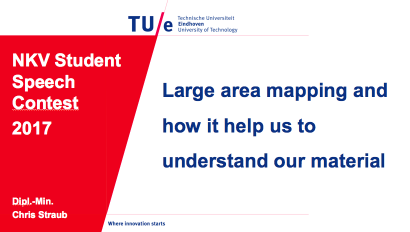
Vincent Stuber, MSc student at Delft University of Technology, gave a presentation on 'Lead-free piezoelectric composites for energy harvesting applications'. Composites are fabricated which can act as energy harvesters to replace, or assist, batteries in smaller electronic devices. This way, the lifetime of the devices increases and they become more environmentally friendly. The composites consist of piezoelectric ceramic fibres embedded and aligned in a polymer matrix, and are capable of converting mechanical vibrations into electrical energy. The main goal of the research is to increase the efficiency of these composites for energy harvesting applications. 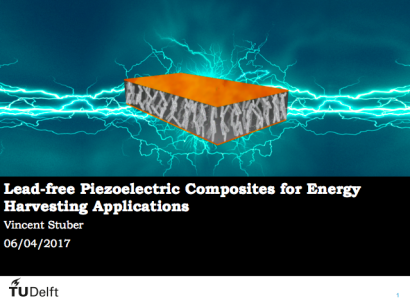
Almost playing a 'home game', PhD student Renaud Merlet of University of Twente revealed the ins and outs of 'Transport through grafted ceramics' to the audience. Renaud investigates hybrid membranes for the nanofiltration of organic solvents. He is researching how to tune the surface and pores of ceramics with polymers, and then seeks to understand the fundamentals governing transport through these hybrid membranes. 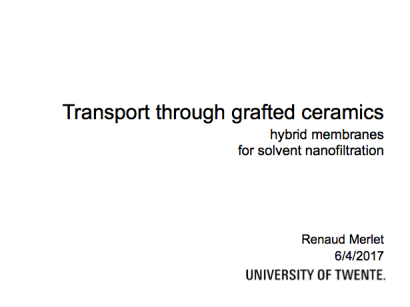
Lucia Carabat, PhD student at Delft University of Technology, gave a presentation on 'Self-healing Thermal Barrier Coatings for prolonged lifetime'. The primary goal of her research project is the creation of new, unique self-healing thermal barrier coating (TBC) for application in jet engines to prolong the lifetime of critical high-temperature components. The new concept is based on novel alumina coated Mo-Si particles embedded in the TBC layer, typically consisting of yttria-stabilised zirconia. As the current TBC do not exhibit any self-repair, the new self-healing TBC will offer a reduction of the number of TBC replacements during an engine lifetime and enhance the reliability of the critical components. 
Finally, Irene Lodoso Torrecilla, second year PhD student at RadboudUMC, entered the stage. Her work is focused on degradation of calcium phosphate cements for bone regeneration, and her presentation was titled 'Sucrose porogens for accelerated pore formation in calcium phosphate cements'. 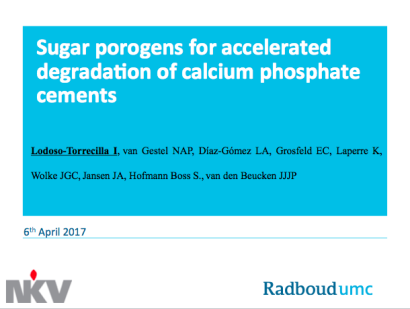
A professional jury with experts in the ceramic field evaluated the quality of the presentations, and so did an audience jury - who, as a matter of fact also consisted mainly of ceramic experts. Renaud Merlet won this year’s edition of the Dutch Student Speech Contest. Although the difference with the other candidates of the Dutch contest was very small, Renaud was number 1 for the professional jury as well as the audience jury. This 'very small difference', i.e. the high quality of the presentations, is shown by the fact that the runner-up for the professional jury was number 3 for the audience jury, and vice versa. By way of thanks for participating, each student has been rewarded a free membership of the Dutch Ceramic Society for the rest of the year, and was able to participate for free in all parts of today's meeting.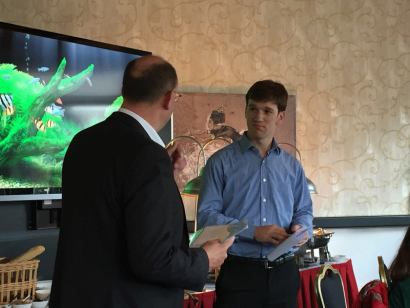
Renaud Merlet (right), winner of the Dutch edition of the Student Speech Contest, is congratulated by Eddy Brinkman, President of the Dutch Ceramic Society (photo by Pim van der Vliet)


Reacties op 'Company visit to Panalytical and Dutch Student Speech Contest'
Geen berichten gevonden
Log in om te kunnen reageren op nieuwsberichten.